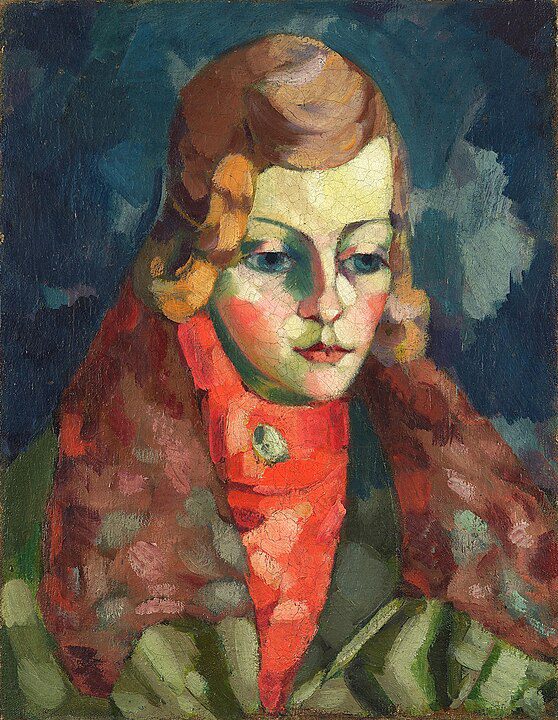
Konrad Mägi was born on November 1, 1878, in Hellenurme, a small village in southern Estonia, which was then part of the Russian Empire. The son of a carpenter, Mägi’s humble beginnings in a rural environment deeply influenced his artistic outlook. From an early age, Mägi showed an interest in art, often sketching scenes from the Estonian countryside. Despite his talent, his path to becoming a painter was far from straightforward.
Mägi enrolled at the Tartu Art School in 1899, where he received his initial training in the fundamentals of drawing and painting. However, financial difficulties forced him to interrupt his studies multiple times. During this period, he also explored various creative outlets, including music and theater, as a means to support himself and his artistic ambitions. These diverse experiences enriched his understanding of artistic expression and contributed to his later work.
The Move to St. Petersburg and Beyond
In 1903, Mägi moved to St. Petersburg, where he studied at the Stieglitz School of Art and Design. While there, he was exposed to the latest developments in European art. The Russian art scene, particularly the vibrant community of modernist painters and intellectuals, played a crucial role in shaping his early style. He became acquainted with the works of Symbolists and Impressionists, whose emphasis on emotion, color, and light resonated with his personal vision.

Seeking to broaden his horizons, Mägi traveled to Finland in 1906. There, he became involved with the local art community and participated in exhibitions that marked his first steps as a professional artist. His landscapes began to reflect a growing sensitivity to color and composition, laying the groundwork for his mature style.
Paris and the Influence of Fauvism
Mägi’s artistic journey reached a pivotal moment in 1907 when he moved to Paris. The French capital, then the epicenter of the art world, introduced him to avant-garde movements such as Fauvism, Post-Impressionism, and Cubism. The bold use of color by artists like Henri Matisse and André Derain left a profound impression on Mägi.
During his time in Paris, Mägi’s work underwent a significant transformation. He abandoned the restrained realism of his earlier pieces in favor of vivid, expressive palettes and dynamic compositions. His paintings from this period, such as Landscape with a Red Cloud and Autumn in Norway, reflect a newfound confidence in his use of color as a means of conveying mood and atmosphere.
Return to Estonia and the Development of a National Style
In 1913, Mägi returned to Estonia, bringing with him the techniques and ideas he had absorbed in Western Europe. This marked the beginning of his most productive and influential period. Settling in Tartu, he became a central figure in the Estonian art scene, advocating for a distinctly national style that fused modernist principles with local themes.

Mägi’s landscapes from this time, such as Vilsandi Island and Saaremaa Motif, are celebrated for their luminous color and emotive depth. He often painted rural Estonian scenes, capturing the beauty of the country’s forests, lakes, and coastal areas. Through his work, Mägi sought to elevate the Estonian landscape to the realm of fine art, imbuing it with a spiritual and symbolic significance.
The Tumultuous 1910s
The outbreak of World War I and the subsequent Russian Revolution had a profound impact on Mägi’s life and career. Political instability and economic hardship limited opportunities for artists, but Mägi remained committed to his craft. During these years, he continued to experiment with color and form, producing some of his most innovative works.
Mägi also became involved in the burgeoning Estonian independence movement. As Estonia declared its independence in 1918, Mägi’s art took on a new significance as a symbol of national identity. He played an active role in the establishment of the Estonian Art Society, which aimed to promote local artists and foster a sense of cultural pride.
Later Years and Artistic Legacy
In the 1920s, Mägi’s health began to deteriorate due to chronic illness. Despite his physical struggles, he continued to paint prolifically, producing works that showcased an increasing focus on abstraction and emotional intensity. His later paintings, such as Capri and Norwegian Landscape, reflect a synthesis of his earlier influences with a more introspective and experimental approach.

Konrad Mägi passed away on August 15, 1925, at the age of 46. Although his career was cut tragically short, his contributions to Estonian art were immense. Mägi is widely regarded as one of the pioneers of modernist painting in Estonia, and his works remain a cornerstone of the country’s cultural heritage.
Artistic Style and Themes
Konrad Mägi’s art is characterized by its vibrant use of color, bold compositions, and deep emotional resonance. He often focused on landscapes, which he saw as a means of exploring the relationship between nature and the human spirit. His works are imbued with a sense of mystery and transcendence, reflecting his belief in the spiritual power of art.

Mägi’s landscapes are not mere representations of physical locations; they are interpretations of the artist’s inner world. Through his use of color and form, he sought to convey the emotions and moods evoked by the natural environment. This approach places him in the tradition of Symbolism, while his innovative techniques align him with the modernist movements of his time.
Legacy and Recognition
Today, Konrad Mägi is celebrated as one of Estonia’s greatest artists. His works are held in major museums and collections, including the Estonian Art Museum in Tallinn and the Tartu Art Museum. Exhibitions of his paintings continue to attract audiences both in Estonia and internationally, underscoring his enduring relevance.
Mägi’s legacy extends beyond his own body of work. As a teacher and mentor, he inspired a generation of Estonian artists, helping to establish a national art tradition that balanced local identity with international influences. His vision of art as a means of spiritual and cultural expression remains a guiding principle for many contemporary artists.

In recent years, there has been a renewed interest in Mägi’s life and work, with scholars and curators exploring his contributions to modernism and his role in the cultural history of Estonia. His paintings, with their vibrant colors and evocative imagery, continue to captivate viewers, offering a window into the soul of an artist who dedicated his life to the pursuit of beauty and truth.
Conclusion
Konrad Mägi’s journey from a rural village in Estonia to the forefront of modernist art is a testament to his talent, determination, and vision. Through his innovative use of color and his deep connection to the natural world, he created a body of work that transcends time and place. As one of the pioneers of Estonian modernism, Mägi not only enriched his nation’s cultural heritage but also left an indelible mark on the broader history of art.




